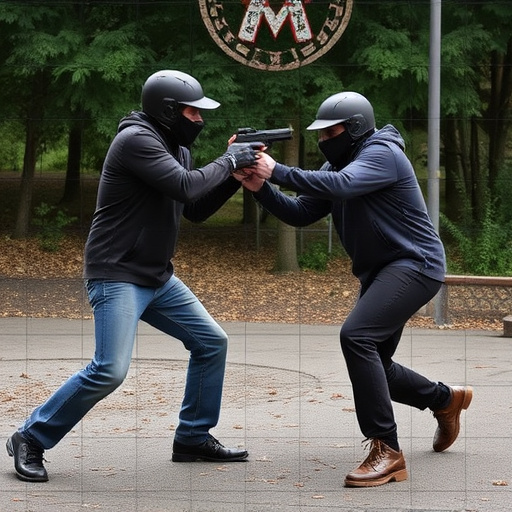Unraveling Stun Gun Effects: Analyzing Electrical Current Spread Patterns on the Nervous System
Understanding how electrical current from stun guns interacts with the nervous system is crucial for…….
Understanding how electrical current from stun guns interacts with the nervous system is crucial for both medical and law enforcement applications. Researchers study the spread of high-voltage, low-current pulses to ion channels, particularly sodium and potassium, to optimize stun gun design, enhance safety, minimize harm, and better treat victims, with a focus on protecting vulnerable areas like the spinal cord and peripheral nerves. This knowledge bridges public safety and ethical considerations regarding stun gun effects on the nervous system.
Electrical current spread patterns are crucial in understanding the impact of high-voltage devices like stun guns on the human body, particularly their effects on the nervous system. This article delves into these intricate patterns, offering a comprehensive analysis of how stun guns function by distributing electric current across various bodily tissues. By exploring these mechanisms, we gain insights into the immediate and long-term consequences of stun gun usage, enhancing our knowledge of their effectiveness and potential risks to users and bystanders alike.
- Understanding Electrical Current Spread Patterns
- Analyzing Stun Gun Effects on the Nervous System through Current Distribution
Understanding Electrical Current Spread Patterns

Understanding Electrical Current Spread Patterns is crucial in gauging the effects of stun guns on the nervous system. When a stun gun delivers an electric shock, it generates a rapid and intense electrical current that spreads through the body. This current disrupts the normal functioning of nerve cells, leading to muscle contractions, pain, and temporary paralysis. By analyzing how this current flows and where it reaches first, researchers can better comprehend the immediate and long-term effects on various bodily systems, including the cardiovascular and respiratory mechanisms.
Such insights are vital in both medical research and law enforcement settings. In medicine, understanding these patterns aids in developing more effective treatment protocols for individuals exposed to stun gun shocks. Law enforcement agencies use this knowledge to ensure the safe and responsible use of stun guns, minimizing harm while maximizing their efficiency as non-lethal force tools. This multifaceted approach leverages scientific understanding to balance public safety with ethical considerations.
Analyzing Stun Gun Effects on the Nervous System through Current Distribution

The study of stun gun effects on the nervous system involves a deep dive into the intricate dance of electrical current distribution within the body. Stun guns, also known as taser guns, use high-voltage, low-current electrical pulses to disrupt muscle control, temporarily incapacitating the target. By analyzing the spread pattern of this electrical current, researchers can better understand the mechanisms behind stun gun effectiveness and potential side effects on the nervous system.
This analysis encompasses tracking the path of ions, specifically sodium and potassium, as they are crucial for nerve impulse transmission. The rapid discharge of electricity from a stun gun disrupts these ion channels, leading to hyperpolarization and inhibition of neuronal activity. Mapping this current distribution helps in identifying vulnerable areas within the nervous system, such as the spinal cord and peripheral nerves, which can be affected by stun gun deployments. Such insights are vital for refining stun gun design, understanding user safety, and mitigating potential long-term effects on individuals subjected to these devices.
By analyzing the electrical current spread pattern, we gain crucial insights into the stun gun’s effects on the nervous system. This understanding enables us to comprehend how these devices impair motor and sensory functions, providing a testament to their powerful impact. In navigating the complex landscape of stun gun technology, this knowledge is essential for both safety measures and the development of more targeted non-lethal weapons, revolutionizing law enforcement tactics in today’s digital era.


